by Taif Alkhudary
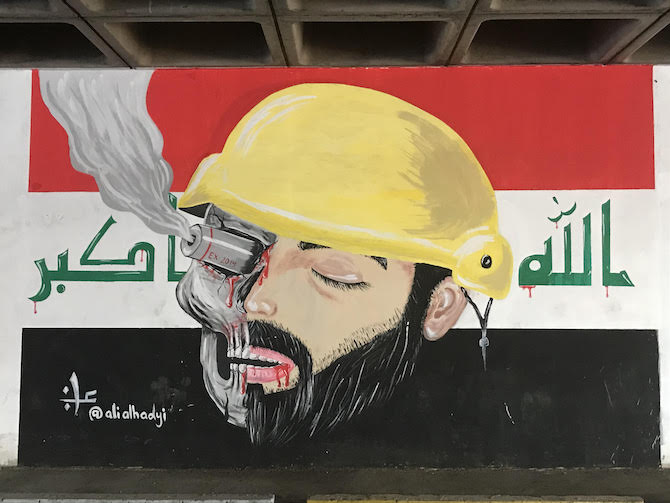
Since 1 October 2019, Iraqis have taken to the streets to demand basic rights: clean water, education, electricity, employment and an end to endemic state corruption that prevents the government from delivering any of these services. The protests have since developed into a call for systemic political change, including the dissolution of parliament, constitutional reform and general elections held under UN supervision.
While the protests have come at a great cost, with the killing of at least 511 demonstrators and the injury of over 20,000 others as a result of the indiscriminate and excessive use of force by both the Iraqi security forces and the Iran-backed Hashd al-Sha’abi militias, by late December it finally seemed that the movement was beginning to make gains.
The assassination on 3 January 2020 of Major General Qassem Soleimani, the head of Iran’s Islamic Revolutionary Guards Corps’ Quds Force and Abu Mahdi al-Muhandis, deputy head of the Hashd al-Sha’abi, by a US drone strike in Baghdad, and the Iranian retaliation that has since followed, risks overshadowing protestors’ gains and serving as a justification for further violence against them. However, it will not mark the end of the protest movement which continues to persist in the face of an unprecedented crackdown.
The most obvious impact of Soleimani and al-Muhandis’ assassinations on the protest movement is the side-lining of demonstrators’ demands, with the killings coming at a time when protestors were finally beginning to make headway. Iraqi Prime Minister Adel Abdul Mahdi had agreed to step down after months of stalling, largely attributed to interference from Soleimani; parliament had approved a new electoral law; Grand Ayatollah Ali al-Sistani had come out in favour of the protestors, calling for the withdrawal of support for Abdul Mahdi’s government and early elections; and President Barham Salih had rejected the nomination of Fatah-backed Basra governor Asaad al-Eidani for Prime Minister in an endorsement of protestors’ calls for an independent candidate. However, with parliament now preoccupied with its response to the US attack and its aftermath, there is a real chance that the protest movement’s demands will be overshadowed.
Even more worrying is the apparent reversal of what had seemed like the weakening of Iranian influence since the start of protests. This is no more clearly illustrated than in the passing of a resolution by the Iraqi Council of Representatives calling for the withdrawal of all US forces from Iraq. This closing of ranks among Iraqi politicians is further evidenced by Abdul Mahdi’s recent failure to criticise Iranian missile strikes on US bases in Iraq as a violation of the country’s sovereignty and the shift in Shi’a cleric Moqtada al-Sadr’s priorities away from the demands of the protestors to anti-US rhetoric. The resurgence of overt pro-Iranian sentiments among Iraqi politicians could spell further violence for protestors at the hands of the Hashd al-Sha’abi, who have deployed snipers and opened fire on demonstrators with the acquiescence of the Iraqi security forces.
Indeed, signs that Soleimani’s and al-Muhandis’ assassinations will result in an escalation of violence have already began to emerge. On 5 January, after demonstrators in Nassiryah refused to allow the slain generals’ funeral procession into the site of protest gatherings, militias opened fire, resulting in the death of at least one demonstrator and injuring three others. Perhaps the most damning sign of things to come, however, is a statement issued by Kata’ib Hezbollah where, presumably in reference to protestors, they called for the ‘expulsion of the American enemy and its followers from Iraqi lands’. This suggests that militias are set to use the accusation that the demonstrations are foreign-funded, which has been levied against them since the very start of the protests, to justify a new cycle of violence.
Despite this, the assassinations are also likely to result in the consolidation of protestors’ overarching demand for a sovereign Iraq. Contrary to the popular framing of the protests as merely anti-Iranian, as early as the beginning of November protestors were already calling for an end to any and all foreign interference in Iraqi affairs. For example, on 6 November, protestors published an article on the front page of the second issue of their revolutionary newspaper Tuk Tuk entitled ‘No to America…No to Iran’. In it, they wrote:
the U.S. and Iran take turns in creating the tragedies of Iraq and in engineering its ruin and the oppression of new generations through ensuring that Iraq continues to be a failed and weak state, incapable of defending itself without the help of these two countries, which may fight and disagree, but always align in relation to what concerns the Iraqi situation […] the Iraqi revolution sneers at this alignment and announces that it has officially opened the door to a new Iraqi identity and national consciousness, which we will not allow after today to belong to either Iran or America.
This is further evidenced in banners that have appeared on the side of the Turkish Restaurant, declaring ‘[t]he country wants sovereignty, the expulsion of the American military and its bases, the expulsion of Iranian influence, the expulsion of the Turkish military’ and ‘[n]o to America, no to Erdogan, no to Saudi Arabia, no to Barzani, no to Israeli intelligence outlets peddling fake secularism’, among others. It is also implied in protestors’ broader demands for constitutional reform and an end to the ethno-sectarian apportionment system, which were imposed on Iraqis by the US and exiled politicians post-2003. Both have encouraged rampant corruption and led to the centralisation of sectarian identities, fuelling the post-invasion civil war and endless foreign interference in domestic Iraqi affairs.
That the assassinations of Soleimani and al-Muhandis will only strengthen protestors’ calls for sovereignty is already visible in Basra, Baghdad and Karbala, where Iraqis have taken to the streets chanting anti-Iranian and anti-US slogans and referring to their supporters as ‘tails’ and ‘suck ups’. It was also evident in al-Sistani’s weekly sermon delivered on 10 January, where he called for ‘Iraq to be the master of all its decisions’ and ‘governed by its children, with no role for foreigners in these decisions’. In addition, the appearance of the hashtag ‘I am Iraqi, the parliament does not represent me’, marks an attempt by protestors to re-focus their messaging and to ensure that their original and overarching demand for systemic political change is not lost amid the ongoing crisis.
Nevertheless, it is important to note that there are also very visible tensions between the different groups participating in the protests. This is most apparent in the lack of coherence among demonstrators as to the details of how they will go about achieving their stated goals. These division are also literally manifested in the composition of protest sites themselves. For example, in Tahrir Square – the epicentre of protests in Baghdad – demonstrators, unable to take a united stance, have set up competing cinemas, tents and stages from which the revolution is to be launched. The issue is further exacerbated by the fact that many activists who might have been able to develop protestors’ demands into a more substantiated manifesto, or could have acted as mediators between the protest movement and the government, have been forced to flee Baghdad due to threats and violence. Such tensions raise the question as to whether, as it stands, the protest movement still poses a threat to the establishment.
Ultimately, however, with Iraqis still camped out in Baghdad and across the southern provinces despite the cold, uncertainty and brutality to which they have been subjected at the hands of their government and Iran-backed militias, it is clear that the protests are not going away anytime soon. It is perhaps this unwavering desire for a homeland that truly serves the Iraqi people that will ensure that the revolution prevails despite the turmoil unleashed in the wake of the assassinations of Soleimani and al-Muhandis.



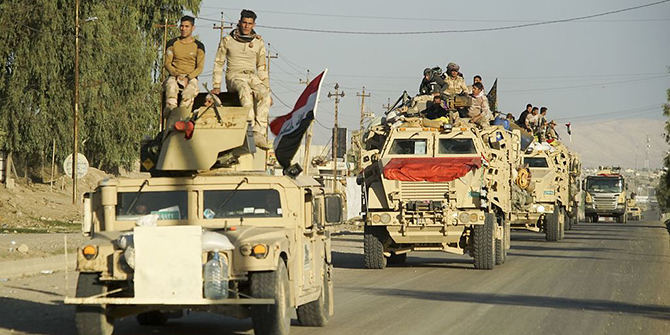
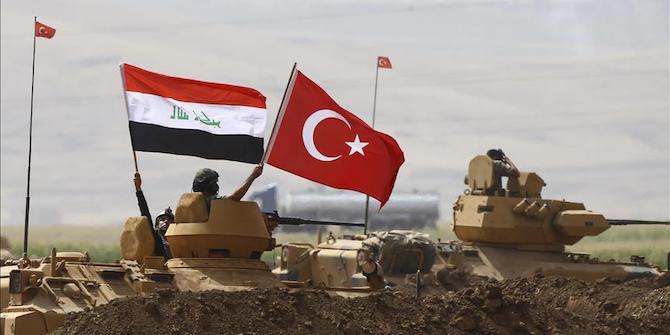
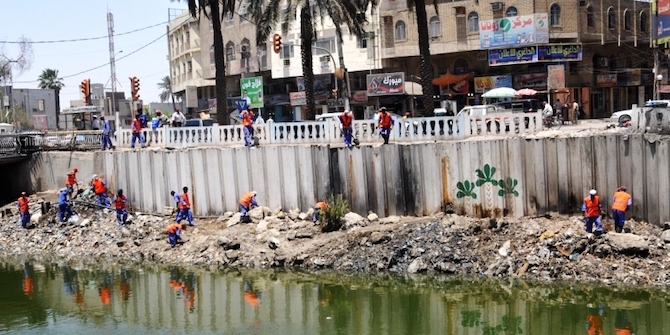
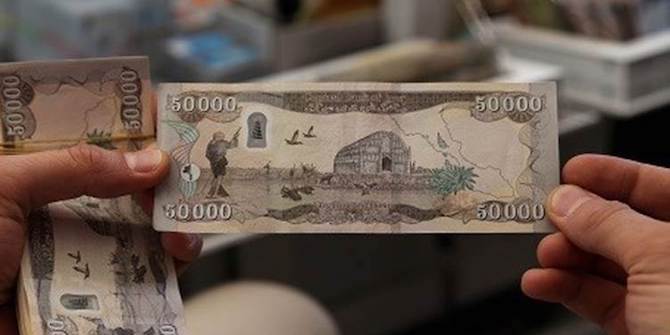
Is there already, or going to be, an Arabic version of the above text?
Thank you
Regards,
Muhamad Tawfiq Ali
(FCIL)
Hi Muhamad – there are no current plans to translate this piece into Arabic, though we are in the process of creating a parallel Arabic-language website which may involve translating old content (such as this) as well as new pieces.